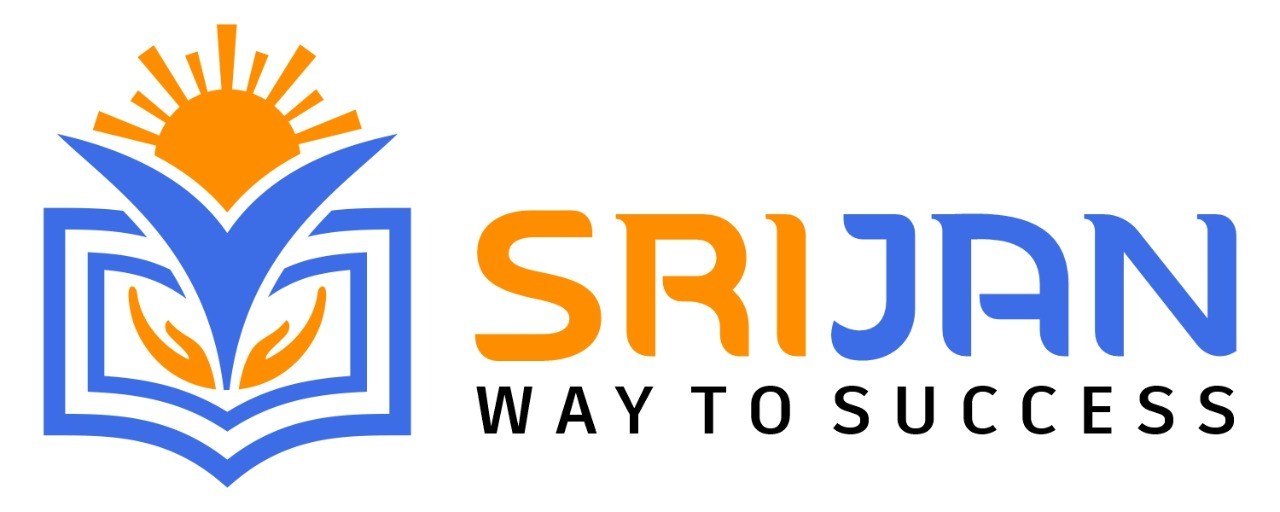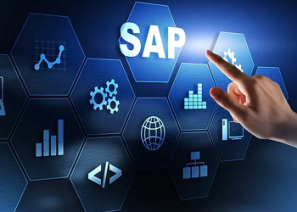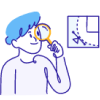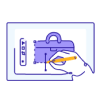SAP MRS Training: Improve Your Resource Scheduling with SA
SAP MRS Training || SAP MRS certification Training || SAP MRS Online training || SAP MRS self-paced training || SAP MRS Instructor-Led training
Key Features of Training:
- 30 Hrs Instructor-led Training
- Mock Interview Session
- Project Work & Exercises
- Flexible Schedule
- 24 x 7 Lifetime Support & Access
- Certification and Job Assistance
SAP MRS(Multi Resource Scheduling):
SAP MRS (Multi Resource Scheduling) is a software solution provided by SAP that focuses on optimizing and managing the scheduling and allocation of resources in various industries. It is designed to help organizations efficiently plan and assign resources based on factors such as availability, skills, location, and priorities.
Prerequisites: Who can attend SAP MRS Training?
- Business Professionals
- SAP Users
- IT Professionals
- Good Communication Skills
Responsibilities of SAP MRS Consultant:
- Requirement Gathering and Analysis
- Solution Design and Configuration
- Implementation and Integration
- User Training and Support
- System Maintenance and Enhancement
Course Benefits
- Job opportunities
- Promotion opportunities (Salary Hike)
- Increased productivity
- Improved decision-making
- Gain in-demand skills
What is the future of SAP MRS Consultant?
- Growing Adoption of Resource Management Solutions
- Industry-Specific Requirements
- Integration with Other SAP Modules
- Advancements in Technology
- Global Implementation Projects
- Continuous Solution Enhancement
The fee for SAP MRS(Multi Resource Scheduling) training can vary depending on several factors such as the location, duration of the course, training format, and level of expertise. SAP offers various training options for MRS, including instructor-led courses, e-learning courses, and virtual live classrooms.
For More details you can Register
SAP MRS(Multi Resource Scheduling) Certification FAQ's:
1. What is SAP MRS certification?
A: SAP MRS certification is a formal validation of an individual's knowledge and expertise in SAP MRS solution. It demonstrates that the certified professional has a solid understanding of SAP MRS functionalities, configuration, implementation, and best practices.
2. What are the prerequisites for SAP MRS certification?
A: Prerequisites for SAP MRS certification can vary depending on the specific certification level and requirements set by SAP. Generally, it is recommended to have a basic understanding of resource management concepts, experience with SAP software, and completion of relevant training courses or hands-on experience with SAP MRS.
3. How can I prepare for SAP MRS certification?
A: To prepare for SAP MRS certification, you can follow these steps:
- Review the SAP MRS certification exam syllabus and understand the topics covered.
- Enroll in official SAP MRS training courses or study materials provided by SAP.
- Gain hands-on experience with SAP MRS through practical exercises or projects.
- Practice with sample questions and mock exams to familiarize yourself with the format and assess your knowledge.
4. Where can I take the SAP MRS certification exam?
A: SAP certification exams are conducted by SAP's authorized certification centers worldwide. You can find the nearest certification center and schedule your exam through the SAP Training and Certification portal.
5. What are the different levels of SAP MRS certification?
A: SAP offers various certification levels for different roles and expertise. For SAP MRS, the certification levels may include Associate, Professional, or Specialist, depending on the specific certification path and job roles.
6. How long is the SAP MRS certification valid?
A: SAP certifications are valid for a specific period, typically two to three years. To keep your certification current, you may need to fulfill certain criteria, such as participating in the SAP Continuing Professional Education program or passing a delta exam for the latest version of the certified solution.
7. How can SAP MRS certification benefit my career?
A: SAP MRS certification can enhance your career prospects as a consultant, analyst, or project manager specializing in resource management. It validates your expertise in SAP MRS, making you more attractive to potential employers or clients seeking professionals with specific skills in scheduling and resource allocation.
8. Can I take the SAP MRS certification exam online?
A: Yes, SAP offers online proctored exams for many of its certifications, allowing you to take the exam remotely from your location. Online proctored exams have specific requirements and guidelines that you need to follow, such as a stable internet connection and a suitable environment for the exam.
9. Are there any prerequisites to maintaining SAP MRS certification?
A: To maintain your SAP MRS certification, you may be required to participate in the SAP Continuing Professional Education (CPE) program. This program helps certified professionals stay up-to-date with the latest developments and enhancements in SAP solutions through various learning activities, such as attending webinars, completing e-learning courses, or participating in conferences.
10. What resources are available to help me prepare for the SAP MRS certification exam?
A: SAP provides a range of resources to support your preparation for the certification exam. These include official SAP training courses, study materials, practice exams, and documentation available on the SAP website. Additionally, you can find community forums and discussion boards where you can interact with other professionals and gain insights into exam preparation.
SAP MRS(Multi Resource Scheduling) Certification:
As of my knowledge cutoff in September 2021, there was no specific certification available for SAP Multi Resource Scheduling (MRS) module. However, SAP offers various certifications related to SAP ERP and other modules that can be relevant to MRS implementation and integration.
To become proficient in SAP MRS, you can consider pursuing the following certifications that cover related areas:
1. SAP Certified Application Associate: Production Planning & Manufacturing with SAP ERP 6.0: This certification focuses on production planning and manufacturing processes, which are closely linked to resource scheduling and management.
2. SAP Certified Application Associate: Enterprise Asset Management (Maintenance & Repair) with SAP ERP 6.0: This certification is relevant if you are interested in managing maintenance activities and resources, which can be a part of resource scheduling.
3. SAP Certified Application Associate: Project System with SAP ERP 6.0: This certification covers project management processes, including resource management and allocation, which can be applicable in the context of MRS.
These certifications can provide a strong foundation in the relevant SAP modules and processes that are closely related to resource scheduling and management. It's always recommended to check the official SAP website for the most up-to-date information on available certifications and their requirements, as new certifications may have been introduced since my knowledge cutoff.
SAP MRS(Multi Resource Scheduling) Curriculum:
1. Overview of SAP MRS:
- Introduction to SAP MRS and its role in resource scheduling and management
- Key features and benefits of SAP MRS
- Integration with other SAP modules and systems
2. Resource Planning and Scheduling:
- Resource types and hierarchies
- Resource capacity and availability management
- Resource scheduling methods and algorithms
- Resource utilization and optimization
3. Configuration and Customization:
- Configuration of SAP MRS settings and parameters
- Defining resource attributes, skills, and qualifications
- Creating resource profiles and groups
- Setting up time and capacity planning calendars
4. Work Order and Task Management:
- Creating and managing work orders and tasks
- Task assignment and scheduling
- Handling task dependencies and constraints
- Managing task statuses and progress tracking
5. Integration with SAP ERP and CRM:
- Integration of SAP MRS with SAP ERP modules such as Project Systems (PS) or Plant Maintenance (PM)
- Integration with SAP CRM for service order management
- Data exchange and synchronization between SAP MRS and other SAP systems
6. Mobile Access and Field Service Management:
- Mobile applications and functionalities for field service technicians
- Dispatching and scheduling resources in real-time
- Mobile access to work orders, task details, and updates
- Offline capabilities and data synchronization
7. Reporting and Analytics:
- Reporting on resource utilization, capacity, and performance
- Analyzing scheduling efficiency and productivity metrics
- Dashboards and visualizations for resource management insights
- Advanced analytics and forecasting for resource planning
8. source Availability and Capacity Planning:
- Understanding resource availability and capacity constraints
- Capacity leveling and balancing techniques
- Resource overbooking and conflict resolution strategies
- Capacity planning tools and techniques in SAP MRS
9. Skill and Qualification Management:
- Defining resource skills and qualifications
- Mapping skills to resource profiles and requirements
- Skill-based resource allocation and scheduling
- Skill gap analysis and skill development plans
10. Time and Attendance Management:
- Tracking resource time and attendance data
- Integration with time management systems
- Time recording and approval processes
- Configuring time-related settings in SAP MRS
11. Resource Optimization and Simulation:
- Advanced scheduling algorithms and optimization techniques
- Simulation and what-if analysis for resource scheduling scenarios
- Predictive resource planning and forecasting
- Identifying and resolving scheduling conflicts
12. Resource Costing and Billing:
- Cost estimation and calculation for resources
- Resource rate determination and cost allocation
- Integration with financial systems for resource billing
- Reporting on resource costs and profitability
13. Project Management Integration:
- Integration of SAP MRS with project management tools and methodologies
- Resource allocation in project planning and execution
- Project resource forecasting and tracking
- Collaboration and communication between SAP MRS and project management teams
14. Enhancements and Extensions:
- Customizing and extending SAP MRS functionalities
- Developing custom reports and analytics
- Implementing customer-specific business rules and workflows
- Integration with third-party systems and applications
SAP MRS(Multi Resource Scheduling) Interview Questions and Answers:
1. What is SAP MRS, and what is its role in resource scheduling and management?
SAP MRS (Multi Resource Scheduling) is a solution for optimizing and managing resources such as employees, equipment, and materials. It enables efficient scheduling, allocation, and utilization of resources to meet business requirements.
2. How does SAP MRS integrate with other SAP modules?
SAP MRS integrates with SAP ERP modules like Project Systems (PS) and Plant Maintenance (PM) for seamless data exchange and resource planning. It also integrates with SAP CRM for service order management.
3. Can you explain the steps involved in resource scheduling using SAP MRS?
The steps involved in resource scheduling using SAP MRS include resource identification, capacity planning, task assignment, scheduling optimization, and monitoring resource utilization.
4. What are the key benefits of using SAP MRS for resource scheduling?
Key benefits of using SAP MRS include optimized resource allocation, improved scheduling accuracy, increased productivity, reduced costs, enhanced customer satisfaction, and real-time visibility into resource utilization.
5. How do you handle resource overbooking or conflicts in SAP MRS?
SAP MRS provides features for resolving resource overbooking or conflicts. It can automatically suggest alternative resources, adjust schedules, or allow manual intervention to resolve conflicts based on predefined rules or user input.
6. Can you describe the process of integrating SAP MRS with mobile applications for field service management?
Integrating SAP MRS with mobile applications involves configuring mobile access settings, enabling real-time data synchronization between the mobile app and SAP MRS, and providing field service technicians with access to work orders, task details, and updates on their mobile devices.
7. How do you monitor and report on resource utilization and performance in SAP MRS?
SAP MRS offers reporting and analytics capabilities to monitor resource utilization, track performance metrics, and generate reports on various aspects of resource management such as capacity utilization, productivity, and scheduling efficiency.
8. Can you explain how SAP MRS handles skill and qualification management?
In SAP MRS, skills and qualifications can be defined for resources, and these attributes can be mapped to resource profiles and requirements. This enables skill-based resource allocation and scheduling, skill gap analysis, and skill development planning.
9. What are some customization options available in SAP MRS?
SAP MRS allows customization to meet specific business requirements. Customization options include configuring settings, defining custom fields and attributes, implementing customer-specific workflows, and developing custom reports or extensions.
10. How would you handle resource capacity planning in SAP MRS?
Resource capacity planning in SAP MRS involves analyzing resource availability and demand, optimizing schedules to balance capacity, leveling workload, and considering factors like skills, qualifications, and constraints to ensure efficient resource utilization.
11. What is the role of SAP MRS in project management?
SAP MRS plays a crucial role in project management by enabling resource allocation, scheduling, and tracking for projects. It ensures that the right resources are available at the right time and helps in optimizing resource utilization within project constraints.
12. Can you describe the integration of SAP MRS with time management systems?
SAP MRS integrates with time management systems to capture and record resource time and attendance data. This integration enables accurate tracking of resource hours worked, absence management, and aligning resource availability with scheduling.
13. How does SAP MRS handle resource forecasting and planning?
SAP MRS provides tools for resource forecasting based on historical data, trends, and future requirements. It enables capacity planning, scenario analysis, and predictive analytics to ensure resources are adequately planned for upcoming demands.
14. Can you explain the concept of resource leveling in SAP MRS?
Resource leveling in SAP MRS is the process of adjusting resource schedules to balance workload and avoid over- or underutilization. It considers resource capacity, project priorities, and constraints to optimize resource allocation and ensure a smooth workflow.
15. What are some key performance indicators (KPIs) that can be used to measure the effectiveness of resource scheduling in SAP MRS?
Some key KPIs for measuring resource scheduling effectiveness in SAP MRS include resource utilization rate, on-time completion of tasks, schedule adherence, resource productivity, and customer satisfaction levels.
16. How does SAP MRS support real-time collaboration and communication between project teams and resources?
SAP MRS provides collaboration features such as messaging, notifications, and real-time updates to facilitate communication between project teams and resources. This helps in coordinating tasks, resolving issues, and ensuring seamless information flow.
17. Can you describe the role of SAP MRS in optimizing service technician dispatching and routing?
SAP MRS enables optimized dispatching and routing of service technicians by considering factors such as technician location, skill set, availability, and customer requirements. It ensures efficient scheduling and minimizes travel time and costs.
18. How would you handle changes or disruptions in resource scheduling plans in SAP MRS?
SAP MRS allows for dynamic adjustments in scheduling plans when changes or disruptions occur. This can be done by reassigning tasks, reallocating resources, and recalculating schedules to accommodate new priorities or constraints.
19. How do you ensure data integrity and consistency in SAP MRS?
To ensure data integrity and consistency, it is important to perform regular data validations, implement appropriate authorization controls, and define data governance policies. Regular data audits and reconciliations help identify and resolve any inconsistencies.
20. Can you provide an example of a challenging resource scheduling scenario you have encountered and how you resolved it using SAP MRS?
In my previous role, I faced a scenario where multiple high-priority projects required the same specialized resources simultaneously. By leveraging SAP MRS, I analyzed resource availability, prioritized projects based on business impact, and used resource leveling techniques to balance the workload and optimize resource allocation. This allowed us to meet project deadlines while ensuring efficient resource utilization.
21. How would you approach training and supporting end-users in SAP MRS?
Training and supporting end-users in SAP MRS involve conducting training sessions, creating user documentation, and providing ongoing support. I would collaborate with key stakeholders, understand their needs, and develop tailored training materials and support resources to ensure a smooth transition and adoption of SAP MRS.
22. How does SAP MRS handle scheduling conflicts and prioritize tasks?
SAP MRS uses predefined rules and priorities to handle scheduling conflicts. It considers factors such as task deadlines, resource availability, task dependencies, and project priorities to prioritize tasks and resolve conflicts.
23. Can you explain the role of SAP MRS in managing resource skills and qualifications?
SAP MRS allows you to define resource skills and qualifications and map them to resource profiles. It helps in ensuring that the right resources with the required skills and qualifications are assigned to tasks, resulting in improved task execution and resource productivity.
24. How would you approach integrating SAP MRS with third-party systems or external applications?
Integrating SAP MRS with third-party systems involves defining data exchange formats, configuring interfaces, and establishing communication protocols. It requires collaboration with technical teams, understanding the data flow, and conducting thorough testing to ensure seamless integration.
25. Can you discuss the benefits of using SAP MRS for resource scheduling in a project-based organization?
SAP MRS provides project-based organizations with optimized resource allocation, improved project planning and execution, enhanced resource utilization, better scheduling accuracy, and real-time visibility into resource availability and capacity. It ultimately leads to increased project efficiency and customer satisfaction.
26. How does SAP MRS handle resource scheduling for maintenance activities?
SAP MRS enables efficient resource scheduling for maintenance activities by considering maintenance plans, asset availability, required skills, and resource capacity. It ensures that maintenance tasks are assigned to the right resources at the right time, minimizing downtime and optimizing maintenance processes.
27. Can you discuss the role of reporting and analytics in SAP MRS for resource management?
Reporting and analytics in SAP MRS provide insights into resource utilization, performance metrics, scheduling efficiency, and capacity planning. It helps in identifying trends, analyzing resource-related data, and making informed decisions to optimize resource management processes.
28. How do you handle resource constraints and availability updates in real-time scenarios using SAP MRS?
SAP MRS allows for real-time updates of resource constraints and availability. By integrating with systems that provide live updates on resource availability, such as HR systems or IoT devices, SAP MRS can dynamically adjust schedules and resource allocations based on the latest information.
29. Can you discuss the challenges you have faced while implementing SAP MRS and how you overcame them?
During the implementation of SAP MRS, I faced challenges such as data mapping and cleansing, configuring complex scheduling rules, and aligning the system with existing business processes. I overcame these challenges by working closely with cross-functional teams, conducting thorough testing, and leveraging the expertise of SAP consultants to ensure a successful implementation.
30. How does SAP MRS support resource cost estimation and billing?
SAP MRS enables resource cost estimation by capturing resource rates, cost factors, and duration of resource assignments. It supports billing processes by integrating with financial systems, allowing for accurate cost allocation and invoicing based on resource usage.
Participants will have 24/7 access to our online lab, providing hands-on experience with SAP MRS tools and scenarios.
This includes server access to S/4 HANA 2023 for 1 year, ensuring you have ample time to practice and apply your skills in a real-world environment.
With this extended access, you can work on projects, explore advanced features, and solidify your understanding of SAP MRS in the latest SAP S/4 HANA version.















